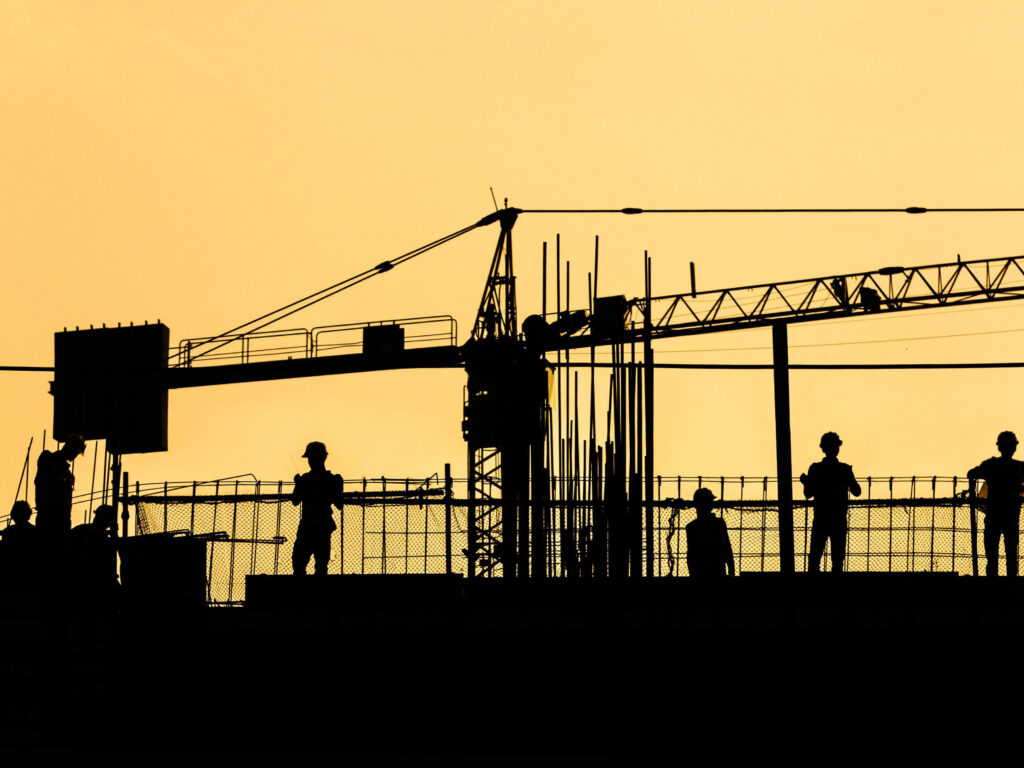First built environment commitment to advance net-zero whole life carbon
Today, WorldGBC announces an update to the Net Zero Carbon Buildings Commitment (the Commitment), expanding its scope to recognise enhanced leadership action in tackling embodied carbon emissions from the building and construction sector. To accompany the Commitment update and its reduction-first approach to decarbonisation, WorldGBC has also published Advancing Net Zero Whole Life Carbon: Offsetting Residual Emissions from the Building and Construction Sector, providing guidance for how the sector should compensate for its total carbon impacts.
The built environment is responsible for almost 40% of global carbon emissions, with 10% from embodied carbon from materials and construction processes.
To limit warming to no more than 1.5°C as set out in the Paris Agreement, the #BuildingToCOP26 Coalition has called for emissions from buildings globally to be halved by 2030, and to reach net zero life-cycle emissions for all buildings by no later than 2050.
As part of the efforts to accelerate these goals, WorldGBC announces an update to its Net Zero Carbon Buildings Commitment to promote and inspire leadership action towards addressing embodied carbon as well as emissions from building operations.
New requirements for the Net Zero Carbon Buildings Commitment
In addition to the Commitment requiring all building assets within direct control to account for all operational carbon emissions (released from the energy used to heat, light, cool and power them) by 2030, from 1st January 2023 businesses and organisations will also be required to:
- Account for whole lifecycle impact of all new buildings and major renovations by mandating they are built to be highly efficient, powered by renewables, with maximum reductions in embodied carbon and compensation of all residual upfront emissions.
- Track and report business activities that influence the indirect reduction of whole life carbon emissions.
This ambitious step is expected to drive similar levels of action from the sector as reported in the recently released Advancing Net Zero Status Report 2021, which highlights how signatories are embedding the Commitment requirements into their business operations, and help the sector advance its decarbonisation goals.
How the Commitment drives decarbonisation with a reduction-first approach
WorldGBC’s Whole Life Carbon Vision for the sector includes a roadmap for the decarbonisation of the built environment, with critical 2030 interim goals and total decarbonisation by 2050. It is outcomes based and action focused, requiring signatories to develop a bespoke roadmap to decarbonise their portfolios by following best practice principles prioritising reduction of energy consumption and embodied carbon, and the use of renewable energy.
This leadership action of Commitment signatories, reinforced with the additional focus on maximum reductions of embodied carbon, means that all new developments and renovations will also prioritise the efficient use of low carbon materials and construction processes, reduce reliance on fossil fuels in construction, and support the transition to a fully decarbonised built environment.
The Commitment promotes aggressive reduction-first strategies, with residual emissions being compensated for via best practice offsets. Until reductions in fossil fuel consumption and emissions become business as usual as part of energy systems and supply chain production processes, there will be some reliance on offsets in order to achieve the balance of net zero emissions. However, through the leadership of Commitment signatories driving demand for low carbon materials and practices, this is expected to reduce over time.
The critical need for best practice carbon offsetting that drives positive systemic change in the built environment
To encourage a best practice approach to decarbonisation, and facilitate net positive impact in pursuit of net zero emissions, WorldGBC has published a guidance document for the sector — Advancing Net Zero Whole Life Carbon: Offsetting Residual Emissions from the Building and Construction Sector.
As part of the transition towards total sector decarbonisation that also enables tangible environment and social co-benefits in support of the Sustainable Development Goals, the guidance document promotes a best practice-approach to offsetting detailed in three principles:
1. Prioritise emissions reduction Minimise the need for offsets in the first place via best practice sustainable construction and operation. This means reducing energy demand, shifting away from fossil fuels, and using 100% renewable energy as soon as possible.
2. Compensate for residual emissions For any residual emissions – those which cannot be abated – invest in carbon reduction or storage projects that are credible, unique, additional and permanent, as determined via independent third party verification.
3. Advance tangible benefits Direct investment into offsets that store carbon and provide additional tangible environmental and/or social improvements, particularly those that have additional nature-based co-benefits or co-benefits in line with the Sustainable Development Goals.
In this approach, WorldGBC encourages the building and construction sector to explore short-term opportunities to support the overall decarbonisation agenda via investment in efforts that enable others to advance their journey to net zero, such as through energy efficiency improvements or establishing access to renewable energy sources. Whilst these sector-based offset projects and non credit based actions are currently under developed, WorldGBC calls on the sector to recognise how this approach is critical to achieving sector decarbonisation goals.
Why the built environment must tackle embodied carbon now
Globally, 10% of carbon emissions comes from the materials and construction processes required to build and renovate buildings, also known as embodied carbon. However, it is estimated that between 2020 and 2050, more than half of total carbon emissions from all new global construction will be due to embodied carbon.
As carbon emissions from the energy used to heat, cool, light and power buildings are reduced through improved energy efficiency and renewable energy, the impact of embodied carbon becomes more significant than ever. This bold approach to accelerate total sector decarbonisation, introduced by the update to the Commitment, is required from the sector to account for these impacts.
Halving emissions by 2030 to achieve a 1.5oC Paris Agreement aligned future
With COP26 and the #BuildingToCOP26 Coalition spotlighting the built environment as a critical solution through the UN’s Race to Zero campaign and the Cities, Regions and Built Environment Day, this sector initiative is crucial in the wider advocacy efforts, calling on bolder and more ambitious building regulation to bring these solutions to scale.
The UN backed Race to Zero campaign is mobilising the shift towards a net zero carbon economy to halve emissions by 2030 and achieve net zero carbon emissions by 2050 at the latest. Recognising the crucial role of the built environment in achieving this goal, our industry must ensure that by 2030 all new buildings, infrastructure and renovations will have at least 40% less embodied carbon with significant upfront carbon reduction, and all new buildings must be net zero operational carbon. The 2030 goal is an important milestone leading to 2050, where all new and existing buildings must be totally decarbonised. This requires an unprecedented shift in the way buildings are designed, built, renovated and re-used, in order to stay within remaining carbon budgets for a below 1.5oC Paris Agreement aligned future.
Aligned with the Race to Zero emissions breakthroughs, the Commitment enables signatories to take action further faster, towards their 2030 decarbonisation goals, whilst also stimulating the mainstreaming of critical and innovative approaches, solutions and business models necessary for the sector to reach climate goals by 2050.
Find out more at buildingtocop.org



